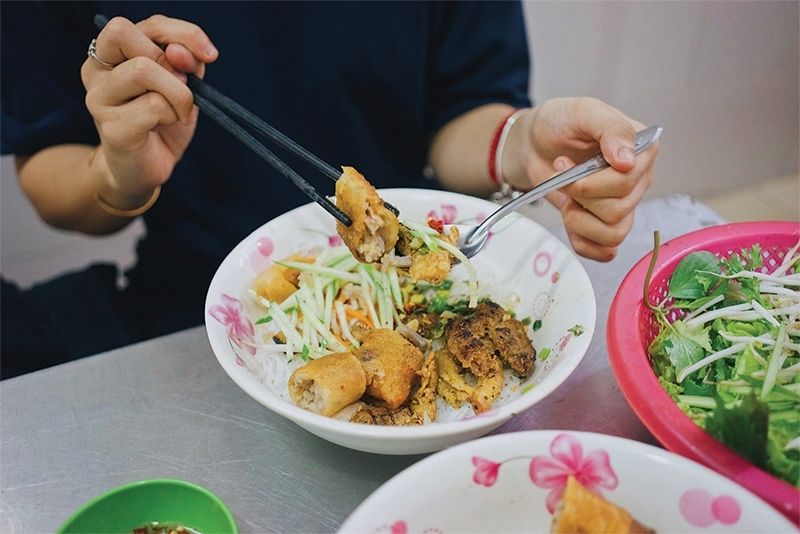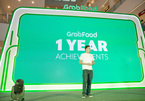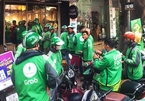 |
|
Fewer customers complain or cancel orders from shops working with the new model
|
Le Minh Thuan, the owner of a shop selling spicy Thai vermicelli in Ho Chi Minh City’s Tan Binh district, revealed that his shop’s order intake has seen a big jump with soaring revenue after the shop registered to join the GrabFood app, a food delivery service run by Singapore-based Grab Holdings Inc., Asia’s fastest-growing startup.
By virtue of useful apps like GrabFood, Thuan’s shop can reach customers in downtown Ho Chi Minh City just like other food stores based in the city centre districts.
Along with Thuan’s shop, many other food stores have reported a hefty jump in sales revenues, some with a three to five-fold increase compared to previous times when not utilising food delivery apps.
In the past, most food shops were living on providing services to familiar or occasional customers but disruptive technologies have helped these shops to scale up.
Food ordering and delivery apps like GrabFood have been gaining increasing traction as more and more food stores register to join these apps, from there broadening their customer base besides boosting shop revenue and employee incomes.
More orders are bringing pleasure to shop owners, but it has also created headaches as during peak hours, many shops connected to food delivery apps find themselves overloaded with work.
Many are full of both customers and delivery drivers who must complete the orders of customers placed through apps.
“I am really exhausted with multiple kinds of work during the shop’s peak hours, including writing vouchers for drivers, filling orders to kitchen staff to prepare food, checking meal quality. This can all take me up to 20 minutes for each order,” said Thuan.
“I also sometimes have to give customers money back – sometimes drivers report on order cancellations because customers have lost patience after a long wait, so that kind of work can take me about another 20 minutes each time.”
Elsewhere, T. Nghi, the owner of a shop selling South Korean dishes in District 1 of Ho Chi Minh City, said that he has found himself in a pickle many times as drivers arrive simultaneously, resulting in placed orders exceeding the material volumes of the shop and overloading work for kitchen staff.
“Joining the app did bring many benefits through surging order volumes. But in such a context, keeping stable quality for customer satisfaction is not that simple,” Nghi said.
Being aware that order overload might lead to losing potential customers, many food delivery service providers have encouraged shops to use an integrated model to optimise service provision, shorten delivery times, and boost competitiveness.
Accordingly, using this integrated model as soon as customers confirm their orders, the orders appear on the merchant app or a point-of-sale (POS) installed at the shop.
As long as the driver-shippers reach the shop venues, the kitchen staff have prepared the food, helping to shorten waiting times significantly. The entire process of placing orders, preparing food, and shipping becomes smoother and seamless.
“At first I was hesitant to shift to using this new integrated model as I am not a tech-savvy,” said Minh Hoa, the owner of a bun cha shop in Ho Chi Minh City’s District 4.
“But the people of GrabFood came to help me install the app on my mobile and, since using the new format, my food shop has been running effectively without the chaos as seen previously.”
Through the integrated model, the payment service is automated based on the banking platform, helping to reduce troubles to shippers by virtue of non-cash payment as well as saving time for shopowners.
“Before having POS, I needed to handwrite all orders and self-calculate the money, so some errors were inevitable,” shared Hoang Chuong, the owner of a shop selling sticky rice with chicken in Hanoi’s Xa Dan street.
“After using the integrated model with a new POS, I only need to check based on the invoice printed by the POS and hand over to shippers. Everything is much better.”
Now along with these shops, the businesses of hundreds of other stores are showing that the integrated service format is a smart way of leveraging the power of technology to boost business efficiency, and ultimately bringing practical values to the community.
GrabFood statistics show that the new format has helped shopowners post 3-4 fold increases in their revenue, while cancelled orders have been halved, just over six months after the food delivery giant launched the new model. VIR
Anh Duc

Vietnam food delivery market is battlefield for four Asian unicorns
SEA and Grab from Singapore, Woowa Brothers from South Korea and Go-Jek from Indonesia are fighting for market share.

Fierce race in Vietnam’s food delivery market: The game really ends?
Newcomers have shaken up Vietnam’s food delivery sector with intensified competition in which only strong contenders can withstand the challenges.
 While food delivery apps have brought many benefits to food shop owners, the introduction of an integrated service model by sector giant GrabFood has already revolutionised the way the service is offered.
While food delivery apps have brought many benefits to food shop owners, the introduction of an integrated service model by sector giant GrabFood has already revolutionised the way the service is offered.